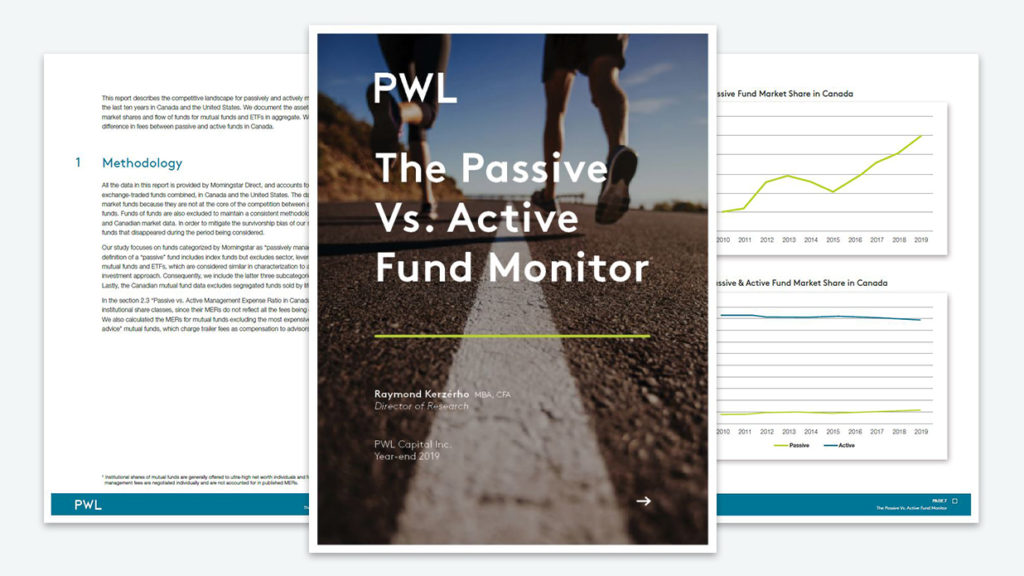This report describes the competitive landscape for passively and actively managed funds since 2010 in Canada and the United States.
In 2019, Canadian passive funds increased their market share from 11.1% to 12% on the back of a positive flow of $15 billion. Meanwhile, Canadian active funds attracted $19 billion. We estimate that Canadian passive funds post a weighted average Management Expense Ratio of 0.28%, compared to 1.59% for active funds. In the U.S., passive funds increased their market share from 37% to 39%. U.S. passive funds attracted $488 billion. Meanwhile, active funds experienced an outflow of $75 billion.
Since 2010, Canadian passive funds have increased their market share from 8% to 12%. During that period, passive funds attracted a cumulative $84 billion in net new money compared to $129 billion for active funds. During the same period, U.S. passive funds have increased their market share from 20% to 39%, and attracted a net money flow of $3.7 trillion, compared to an outflow of $79 billion for active funds.
Overall, passive funds are slowly gaining ground in Canada, while grabbing market share at a fast pace in the U.S. If passive funds keep increasing market share at the current rate, they will represent 50% of the U.S. fund industry by 2025. We also highlight the substantial savings realized by the Canadian investors who choose passive funds. Considering the 1.31% fee difference between active and passive funds, we estimate this net saving to $1.9 Billion dollar for 2019. In our opinion, an active manager needs exceptional skill to overcome such a high hurdle in favor of passive funds and outperform a basic, passive total market fund.

This report was written by Raymond Kerzérho, PWL Capital Inc. The ideas, opinions, and recommendations contained in this document are those of the author and do not necessarily represent the views of PWL Capital Inc.